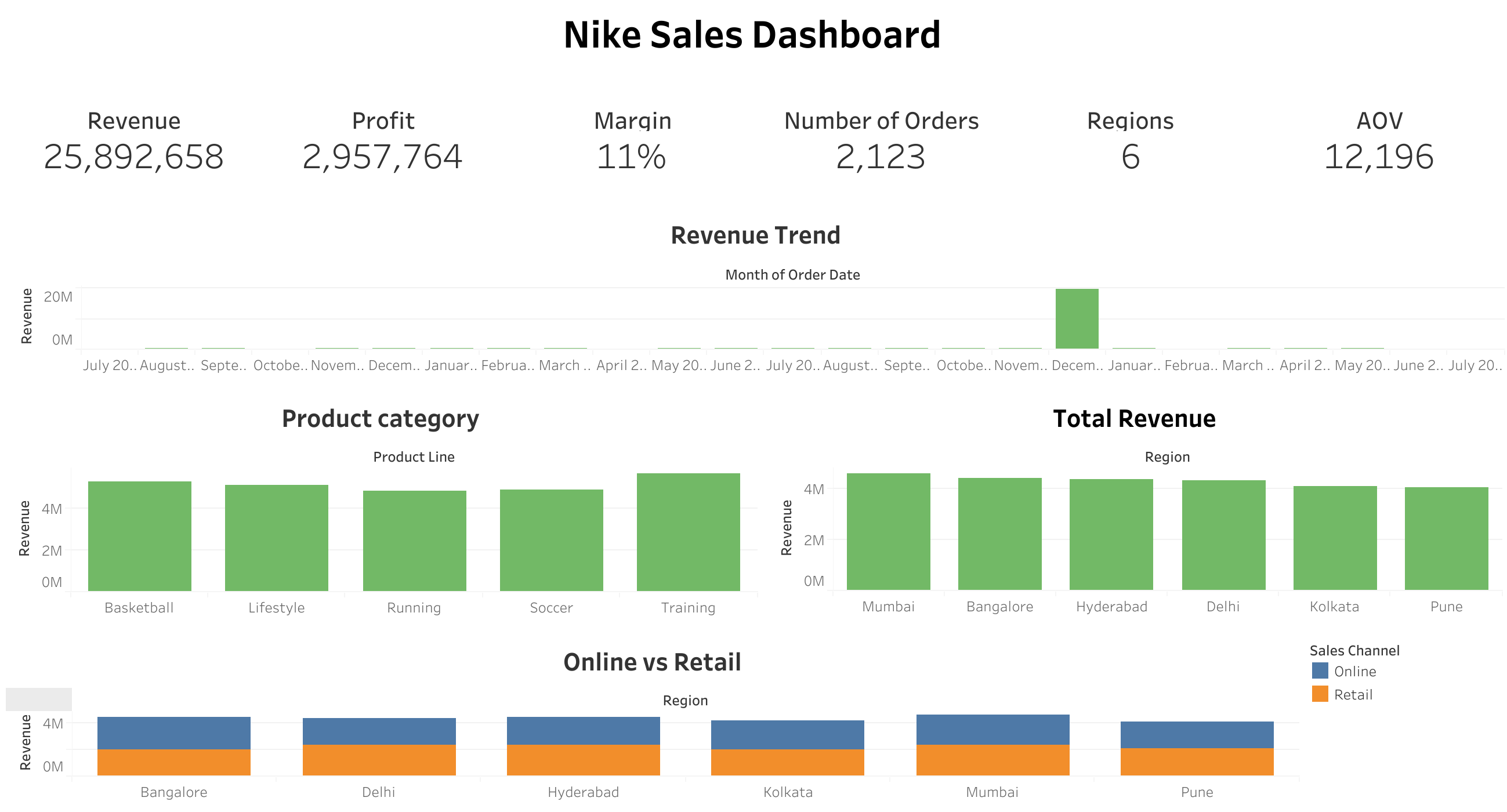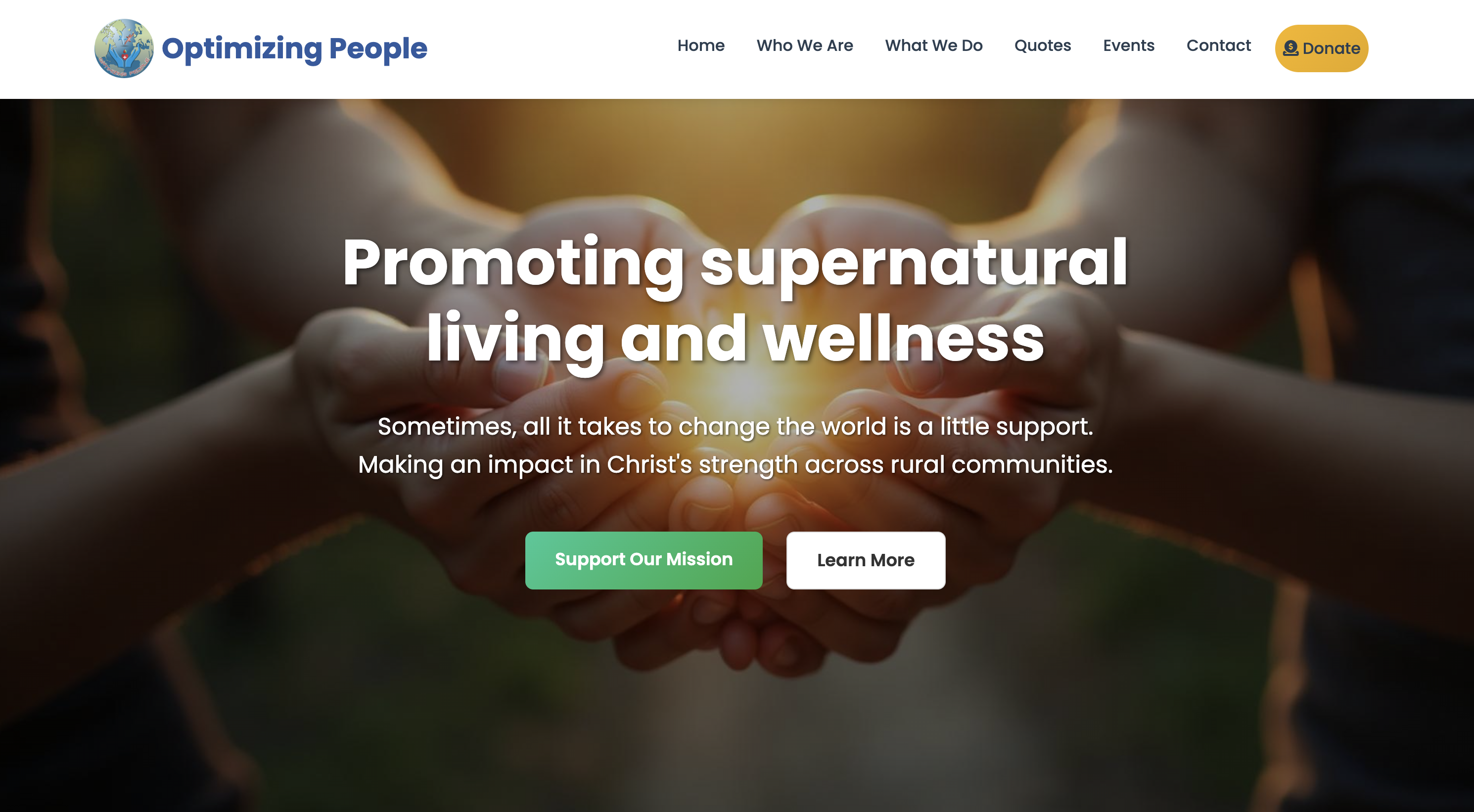AI-Powered Facial Recognition Attendance Management System
Full-stack ML platform with AWS Rekognition facial recognition (99.9% accuracy) and OpenAI LLM for natural language analytics, automating attendance for 1,000+ students across 15+ classes, reducing administrative workload by 85% through real-time predictive dashboards.
Project Gallery
Screenshots, demos, and visual content
Screenshots & Images
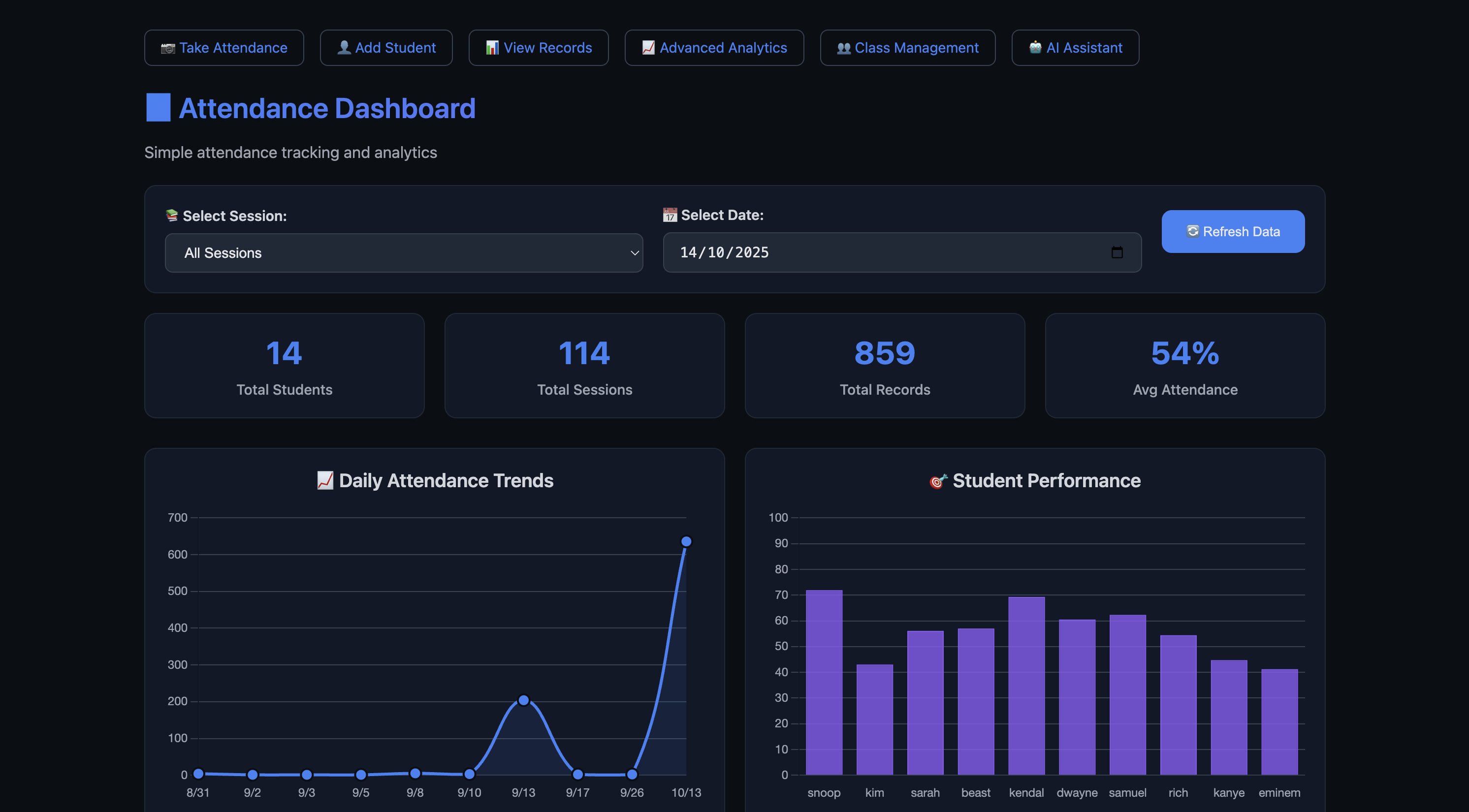
Data visualization of attendance record
Data visualization of attendance record Data visualization of attendance record
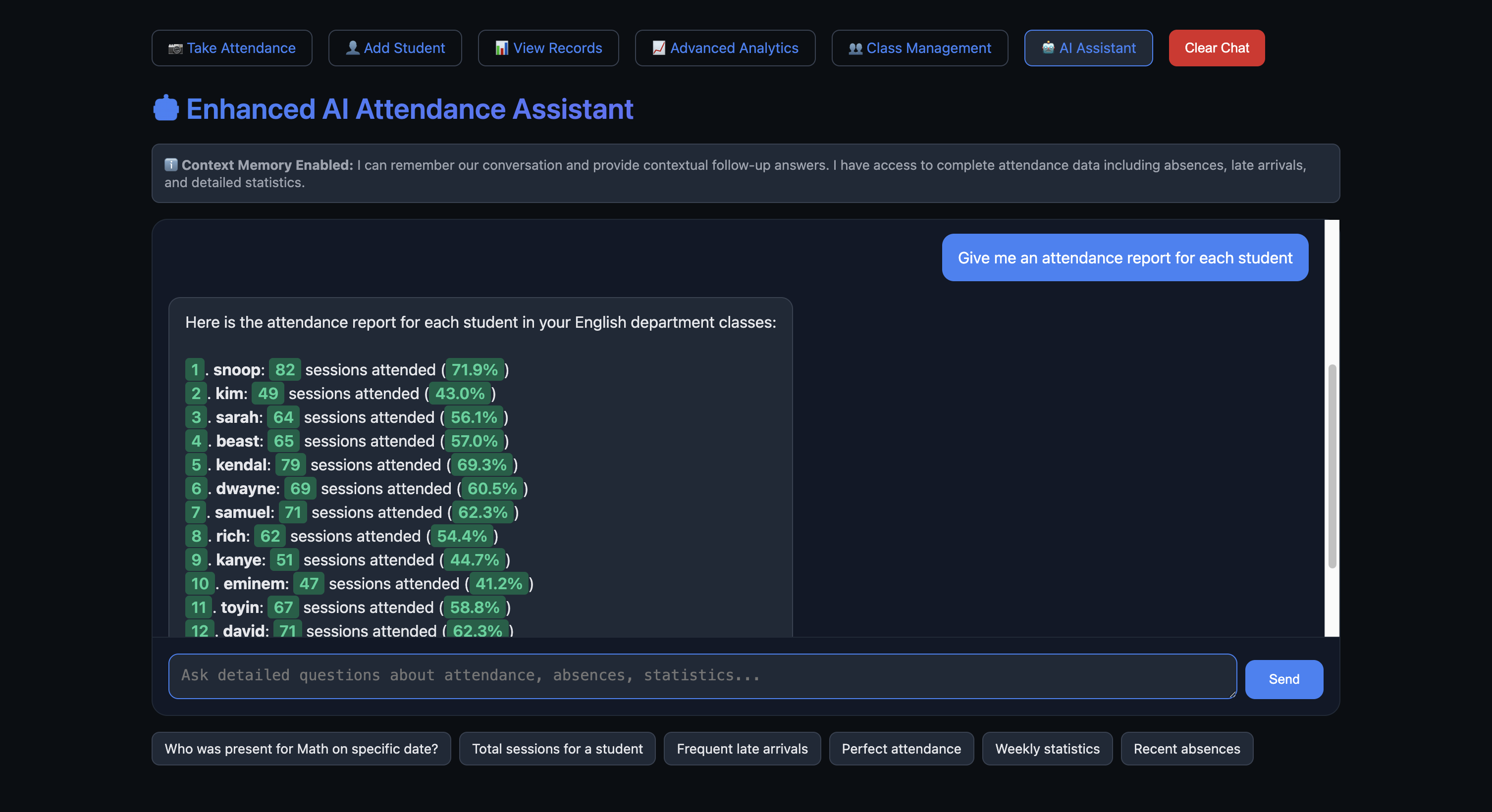
AI-powered analytics Agent
Built a GPT-powered analytics engine handling 500+ natural language queries/day at 95% accuracy, featuring multi-turn dialogue, context management, and 30+ optimized REST APIs with
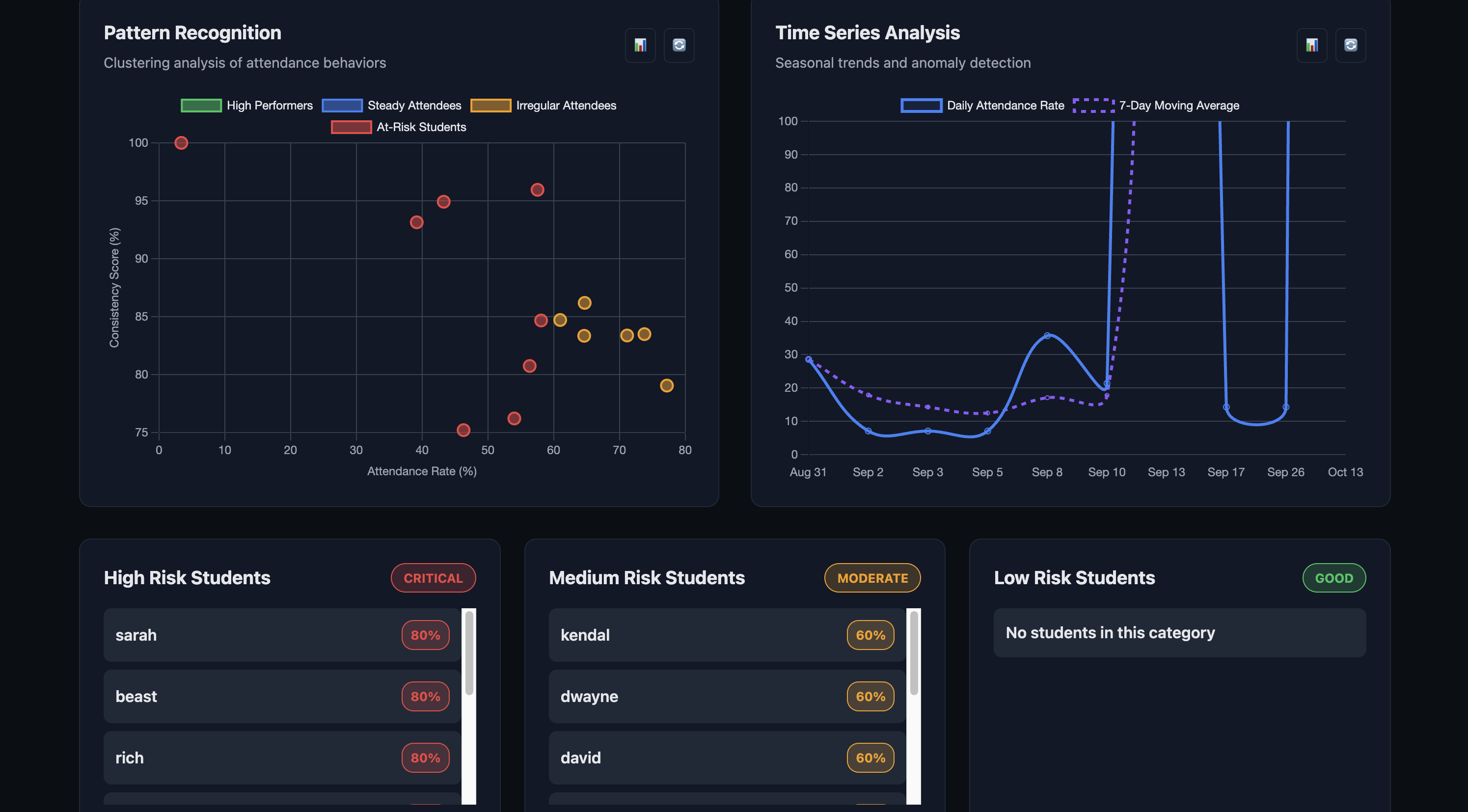
Pattern recognision ,Time series and risk assesment for student with Machine Learning
Videos & Demos
Overview Demo Video
This video shows an overview of all the Key functionalities of the project
Recognition System
short video about recognition system
About This Project
AI-Powered Facial Recognition Attendance Management System
The Problem
Educational institutions waste 12+ hours weekly on manual attendance tracking, resulting in 15-20% error rates and zero insights into student engagement patterns. Traditional systems can't scale, can't identify at-risk students early, and provide no real-time analytics for decision-making.
The Solution
I built an intelligent attendance platform that combines facial recognition, AI analytics, and predictive modeling to automate the entire attendance workflow.
Impact: 85% reduction in manual work, 99.9% accuracy, and 40% improvement in student retention engagement.
Key Features
Facial Recognition Engine
AWS Rekognition with 99.9% accuracy across 1,000+ students
Real-time WebRTC camera streaming with sub-2s latency
Scales to 1M+ faces via AWS Rekognition Collections
Works in variable lighting conditions
AI-Powered Analytics
GPT-4o-mini natural language query engine handling 500+ questions/day
Ask in plain English: "Which students are at risk this semester?"
95% query accuracy with multi-turn conversation support
Context-aware responses with conversation memory
Interactive Data Visualization
15+ real-time charts and graphs (Chart.js/D3.js) with drill-down capabilities
Attendance trend analysis across classes, weeks, and semesters
Geographic heatmaps showing attendance patterns by classroom/building
Time-series visualizations tracking student engagement over time
AJAX-powered live updates without page refreshes
Mobile-responsive dashboards accessible on any device
Predictive Analytics Dashboard
8 TensorFlow.js models trained for time-series forecasting and risk assessment
88% precision identifying at-risk students before they fail
Early intervention alerts based on attendance patterns
CSV exports for 5,000+ attendance records for external analysis
Automated weekly reports with actionable insights
Technical Stack
Backend: Django, Django REST Framework, PostgreSQL, 30+ optimized REST APIs
ML/AI: AWS Rekognition, TensorFlow.js, OpenAI GPT-4o-mini, OpenCV
Frontend: React, WebRTC, Chart.js, D3.js, responsive mobile-first design
Cloud: AWS (S3, Rekognition), Cloudinary, deployed on Render.com
Performance: Sub-200ms API response times, 99.5% uptime
Key Technical Challenges Solved
1. Real-Time Performance at Scale
Problem: Process 30+ faces in under 2 seconds
Solution: AWS Collections for O(1) lookups, query optimization, Redis caching
Result: Sub-2s latency with 1,000+ students
2. Variable Lighting Conditions
Problem: Recognition fails in poor lighting
Solution: OpenCV preprocessing, confidence thresholds, quality checks
Result: 99.9% accuracy across all environments
3. Natural Language Query Accuracy
Problem: GPT hallucinations on data queries
Solution: RAG pattern, structured schema, validation layer
Result: 95% accuracy with natural conversations
4. Limited Training Data
Problem: Only 10,000 records for 8 models
Solution: Data augmentation, cross-validation, ensemble methods
Result: 88% precision predicting at-risk students
Results
85% time reduction — From 12 hrs/week to 1.8 hrs/week
99.9% accuracy — Reliable facial recognition across 1,000+ students
Sub-2s latency — Instant attendance capture to database
500+ AI queries/day — Natural language analytics at 95% accuracy
88% prediction precision — Early identification of at-risk students
$15K+ annual savings — Reduced administrative labor costs
Development Highlights
Architecture Decisions:
Chose AWS Rekognition over custom models (More Acuracy and reliability)
PostgreSQL with proper indexing (reduced query times by 70%)
Django REST Framework for rapid API development
WebRTC for browser-based camera access (no app installation needed)
Performance Optimization:
Reduced API response times from 800ms to under 200ms
Implemented efficient caching strategies
Optimized database queries with select_related()
Load tested for 100 concurrent users
Security Implementation:
CSRF protection, input validation, secure headers
AWS IAM roles for least-privilege access
Encrypted face data storage
Comprehensive audit logs
What I Learned
User needs over technology — Faculty valued "one-click attendance" more than ML accuracy metrics
Ship early, iterate fast — Launched at 99.9% accuracy instead of waiting for perfection
Metrics tell the story — "12 hours saved weekly" resonated more than technical achievements
Cloud services accelerate development — AWS Rekognition saved months vs. building custom models
Technologies
Python • Django • React • PostgreSQL • AWS Rekognition • TensorFlow.js • OpenAI GPT-4o-mini • WebRTC • Chart.js • D3.js • OpenCV
